order

Coleoptera
“Adult Beetles”

Coleoptera
“Larval Beetles”

Diptera
“True Flies”

Ephemeroptera
“Mayflies”

Hemiptera
“True Bugs”

Lepidoptera
“Aquatic Caterpillars, Snout Moths”

Megaloptera
“Alderflies, Dobsonflies, and Fishflies”

Odonata
“Dragonflies and Damselflies”

Plecoptera
“Stoneflies”

Trichoptera
“Caddisflies”
family
Dryopidae
genus
Helichus
“Long-toed Water Beetles”
Genus Overview
This is a widespread genus with 7 North American species. Adults are clingers in fast water, feeding generally as scrapers and shredders-herbivores.
Characteristics
POLLUTION TOLERANCE
Southeast: 5.4 and higher
Upper Midwest: 5 and higher
Midwest: 3.2 and higher
Mid-Atlantic: 5 and higher
0 = least tolerant, 10 = most tolerant
FEEDING HABITS
Scraper / Grazer
Shredder / Herbivore
Shredder / Herbivore
MOVEMENT
Climber
Clinger
Clinger
DISTRIBUTION
Widespread (east of the Rocky Mtns.)
HABITAT
Lentic-littoral
Lotic-erosional
Lotic-erosional
Diagnostic Characters
Order
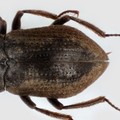
Elytra
Family
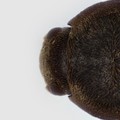
Head Partially Hidden
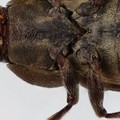
Transverse Coxae
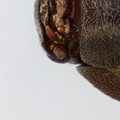
Unique Antenna
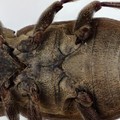
Visible Trochantins
Genus
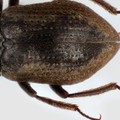
Pubescence of Elytra
+ Expanded Character List
Order:
Adults with hardened forewings (elytra) covering the hind wings.
Family:
Head usually partially contracted into thorax. Each antenna 11-segmented, usually with enlarged basal segment and expanded 2nd segment covering remaining antennal segments folded beneath it. Prosternum expanded anteriorly as prominent lobe beneath head. Elytra concealing entire abdomen or exposing only part of one abdominal tergite. All tarsi 5-segmented. Forelegs with transverse coxae and visible trochantins, unlike Elmidae. Hind coxae not touching. Abdomen 5- or 6-segmented.
Genus:
Antennae widely separated at bases. 2nd antennal segment enlarged, and shield-like, protecting remaining segments which may be retracted beneath it. Pronotum without groove near lateral margin. Parts of body and legs with fine wooly hair. Hairiness of last abdominal sternite different from other sternites, often bare.
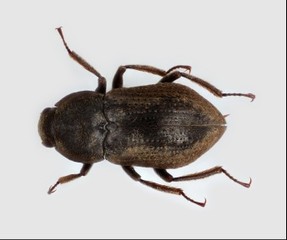
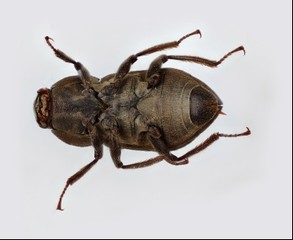
Dorsal
Ventral



